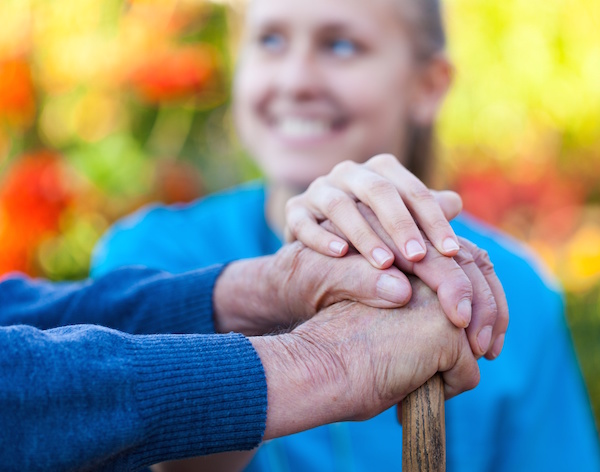MONDAY, Feb. 6, 2017 (HealthDay News) — Obesity affects many facets of life, and now a new study suggests that carrying a great deal of extra weight also may affect the way a person dies.
Obese people are less likely to spend their last days in hospice care and more likely to die at home, the new research found.
It’s not yet clear why the difference exists or exactly what it means for the quality of life for obese people in the final stages of their lives. But theories include potential bias against the obese and the unique challenges obese people face in getting proper medical treatment, the study authors said.
“People who are more obese do sometimes feel stigma from providers and may get less care,” said study lead author Dr. John Harris, an assistant professor with the University of Pittsburgh School of Medicine.
Dr. David Casarett, chief of palliative care at Duke University in Durham, N.C., was not involved with the study but was familiar with the findings.
Casarett said, “We know that obesity is a large and growing public health epidemic, but we know little or nothing about how obesity shapes late-life care, including nursing home care, hospice use and end-of-life care.”
The study authors tracked the experiences of almost 5,700 Medicare beneficiaries who died between 1998 and 2012. The investigators looked at weight levels and whether or not someone died in hospice care.
The patients were categorized by three body mass index measurements: 20, 30 and 40. Body mass index (BMI) is a rough measure of a person’s body fat based on height and weight. A normal BMI is between 18.5 and 24.9. Overweight is between 25 and 29.9. A BMI over 30 is considered obese. Someone with a BMI of 40 or more is considered morbidly — or severely — obese, according to the U.S. Centers for Disease Control and Prevention.
For someone 5 feet 9 inches tall, a normal BMI weight is between 125 to 168 pounds. Overweight is between 169 to 202 pounds. And, anyone over 203 pounds is considered obese for that height. Morbid obesity begins at 271 pounds, according to the CDC.
In the new study, the 117 severely obese patients died earlier, at an average age of 72. People with a normal weight (2,509 people) died at an average age of 82, the study authors reported.
Overall, nearly 35 percent of those in the study received hospice care, but just 23 percent of the severely obese did. In addition, the severely obese spent four fewer days in hospice care than those with a BMI of 20.
The researchers found that 55 percent of those with a BMI of 40 died at home, which is one of the goals of hospice when it’s possible. The number was 61 percent for those with a BMI of 20.
The study wasn’t designed to pinpoint any causes of the differences. However, one theory is that “people who are carrying more body weight at the end of life may look slightly healthier,” Harris said, “and doctors may be less likely to recognize that they’re dying and recommend hospice.”
Harris also noted that patients with extreme obesity pose special challenges to the health care system.
“I can think of women with obesity who are bed-bound at the end of life and the amount of care that it takes to move them to provide good skin care, toileting and bathing. It sometimes requires multiple nurse aides,” said Harris, who’s an obstetrician/gynecologist and so his experience is only with women.
Duke University’s Casarett said obese patients themselves may find it difficult to get care.
“I took care of a patient once who was morbidly obese and had trouble getting out of the house,” he said.
“Despite our best efforts, she became homebound, skipping medical appointments and ignoring what were probably early signs of colon cancer, which eventually took her life. I can’t say that obesity caused her death, but it was definitely a contributing factor to her choices not to seek health care,” Casarett said.
Dr. Eric Widera is an associate professor of clinical medicine at the University of California, San Francisco. He noted that one of the biggest challenges for the obese at the end of life is not having the needed support at home.
“Hospice at home often relies on friends and families to help with care needs throughout the day, which is only made more challenging when it requires more than one or sometimes more than two people,” said Widera, who is also director of hospice and palliative care for the local VA Medical Center.
Dr. Deepak Gupta, a clinical assistant professor of anesthesiology at Wayne State University in Detroit, said one solution could be to create special hospices for the obese.
“Almost half of the aging population is overweight and obese, and all will eventually require end-of-life care,” he said.
Study author Harris said it’s important for doctors to recognize the special issues facing the obese “and consider hospice at earlier points in severe illness than they would for a standard patient.”
In addition, higher levels of reimbursement for caregivers may be appropriate when care for these patients poses special challenges, he said.
The study was published online Feb. 6 in Annals of Internal Medicine.
More information
For more about obesity, visit the U.S. Centers for Disease Control and Prevention.
Copyright © 2024 HealthDay. All rights reserved.

